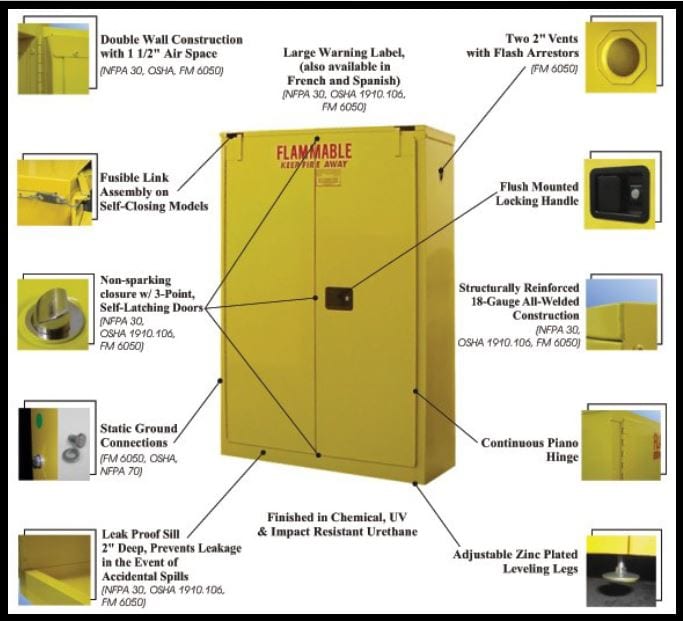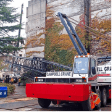Storage cabinets provide a safe and convenient means to store containers of liquids including those in safety cans.
Key features for a good flammable and combustible liquids storage program are:
- Not more than 120 gallons of flammable or combustible liquids may be stored in a single cabinet. Not more than 60 of the 120 gallons may be Class I and II liquids.
- Doors should be closed and latched. Automatic closing doors should be checked for complete closing upon release of the fusible link.
- Liquid storage containers should be kept in the cabinet when not in use.
- Vents on cabinets are not required, but they are often provided. If vented, flame arrests should be provided on the openings. Also, the vents should be extended to a safe location, generally outside the building. Otherwise, the vents should be closed so flammable vapors cannot escape into the room.
- Properly label each cabinet “Flammable — Keep Fire Away.”
- Only flammable and combustible liquids should be stored in the cabinet. Acids, caustics and other nonflammable hazardous materials should not be stored in the cabinet.
- Not more than three cabinets may be located in a fire area. However, industrial occupancies may have an additional cabinet or three-cabinet group that is separated by at least 100 feet from other cabinets or groups.









